Sidewinderís Comprehensive Head Unit Install Guide
This guide is written to help anyone who wishes to swap out the stock radio with their own after-market head unit. The hope is that my current documentation of this install will help whoever reads this to easily swap their head unit into the dash. Before this gets started though, I have a couple notes about this document that are important in regards to how these instructions apply.
First, this install was performed on the second generation redesigned dash. I do not know if any of these steps will apply to the first generation as I have ZERO knowledge of its design in comparison.
Secondly, this radio is the base radio WITHOUT ONSTAR. From my understanding OnStar can make this install infinitely more complicated. When we were finding the harness for the head unit, the plug and play OnStar option was around $130 if I recall correctly.
**Most importantly, I am not responsible for any damage you cause by following this guide. It is meant as that, a guide and a visual representation of how my install was performed. If you do not have the skill, knowledge or patience to perform a task like this, please go to a professional.**
Parts
I had a buddy of mine who works in a Futureshop install bay help me source the wiring harness and the dash mount kit. Thankfully these necessary pieces were in stock and I was able to get started right away. The wiring harness and dash kit both came from this manufacturer:
http://www.metraonline.com
Specifically, these were the parts that were used:
Metra Part # 99-3306 | Chevrolet Aveo Dash kit | Metra Online
Metra Part # 70-2105 | Chevrolet Impala wire harness | Metra Online
We werenít sure if the Impala harness was the correct one, but it turns out that it worked just fine. If this was installed in an Impala, you would lose OnStar and some of the chimes as they are piped through the stereo (another reason why GM wiring harnesses are stupid expensive now).
The other item I needed after discovering I did not have the adapter was this:
Metra Part # 40-CR10 | Chrysler Antenna | Metra Online
You may or may not need this, depending on the setup of your head unit for the radio antenna or if it comes with this adaptor.
Tools
I literally only used two tools for this job, one being a plastic trim puller, the other is a Phillips head screw driver.
The Good Stuff
Here are all the pieces sans the radio antenna adapter. The kit comes with everything you need to install a single din, double din or a stacked setup of decks.
Just a shot of the packaging for comparison sake in case you want to pick up the same items.
I took some shots of the manual as well, to give you an idea of the instructions for this kit. The wiring harness doesnít come with instructions as it is fairly straight forward. You simply match color to colour and splice together. However I often find I want to know what kind of instruction I get, as I have received some poor instruction manuals in the past.
The instructions seem simplistic, but the dash in the car MAKES it easy. Thankfully, our dash uses a standard setup which makes things easier for fitment.
I decided before I started pulling dash panels that I would test fit my head unit into the dash kit and ensure everything fit fine. Everything fits together quite nicely with the kit, so now itís on to getting access to the stock unit.
IT BEGINS!
I used a plastic trim puller to get the surround off; and this will be the only dash piece that you need to remove. This definitely took some patience, so donít get frustrated because you will probably break this piece. I pulled it out from the bottom of the ĎUí as this is essentially not visible once back in place, so if you scratch the trim it wonít be seen. The red circles are the clips that pop the piece in place.
IMPORTANT NOTE: BE PATIENT, the metal clips that hold this trim piece in place are very good at their job. It will require a bit of force to remove this piece and it will flex, but donít get frustrated or you will break it. When I was removing it the top right corner did not come free immediately. I wiggled the piece and pulled ever so slightly harder until the clip let loose.
Not the best picture, but the circle is the clip that holds the piece in place.
Here is a shot with the piece removed. I have marked certain areas of note in this image for this install. The red circles are where the trim piece clip into the dash, and the blue circles are the Phillips head screws that need to be removed in order to pull the stock head unit out of the dash. Simple, easy removal.
Once you have the stock unit pulled out, you will need to remove the antenna cable and unplug the harness. The antenna simply pulls straight out; the harness connectors shown above require one extra step. The blue portion of the clip that is circled is a lock for the connection, and needs to be pulled back to allow the harness connectors to be removed.
Gaze into the huge expanse that is behind the stock unit. You could fit a computer in there, and Iím actually not kidding about that. This is the space we have to work in, and compared to my last vehicle it makes the installation and cable management much easier. Another item of note and is also circled is the metal bracket in the top center. This bracket is used to hold up the back the unit.
The circled piece is the section that slides into the bracket in the previous image. I took the extension from the stock radio and installed it on the back of the unit I was putting in. This piece simply unscrews from the back of the units. An aftermarket head unit should come with its own extension, mine did but it was too short.
The nice thing about test fitting the dash kit beforehand was that I was able to simply leave everything together and slide it in as a single unit. This allowed me to ensure that everything was correct and would fit ok before I semi-permanently attached the wiring harness.
Here is the final wiring harness connection all plugged in and ready for testing (and working). I was going to solder this myself, but the stereo guy I mentioned at the beginning was bored and wanted to do it. Frankly, I couldnít say no as he did a much better job than I would have. You can use plastic crimp type connections but I find they cause more headaches then they solve if you simply solder in the first place. He finished off the connections by using a shrink material that heat shrinks over the cables. Again, match color to color in terms of connecting the harness to the aftermarket head unit.
MORE TO COME!
Please either post here or message me if there are any pictures you would like me to take, once this goes back together it isn't coming back apart unless I need to.

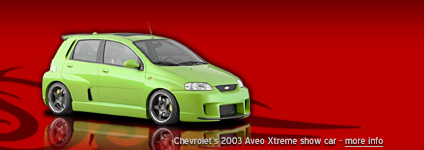

 LinkBack URL
LinkBack URL About LinkBacks
About LinkBacks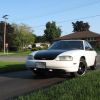 1996 Chevrolet Lumina
1996 Chevrolet Lumina 2010 Pontiac G3
2010 Pontiac G3
















 Reply With Quote
Reply With Quote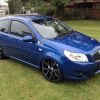 The blue Bullet
The blue Bullet 2011 Chevrolet Aveo
2011 Chevrolet Aveo 2010 Chevrolet Aveo LS
2010 Chevrolet Aveo LS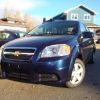 Eve
Eve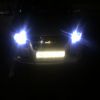 2011 Chevrolet aveo
2011 Chevrolet aveo